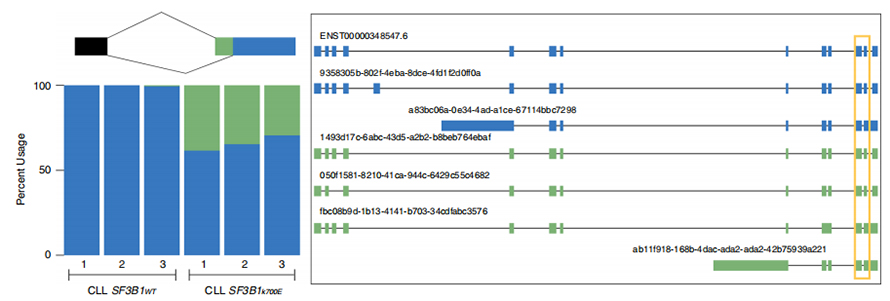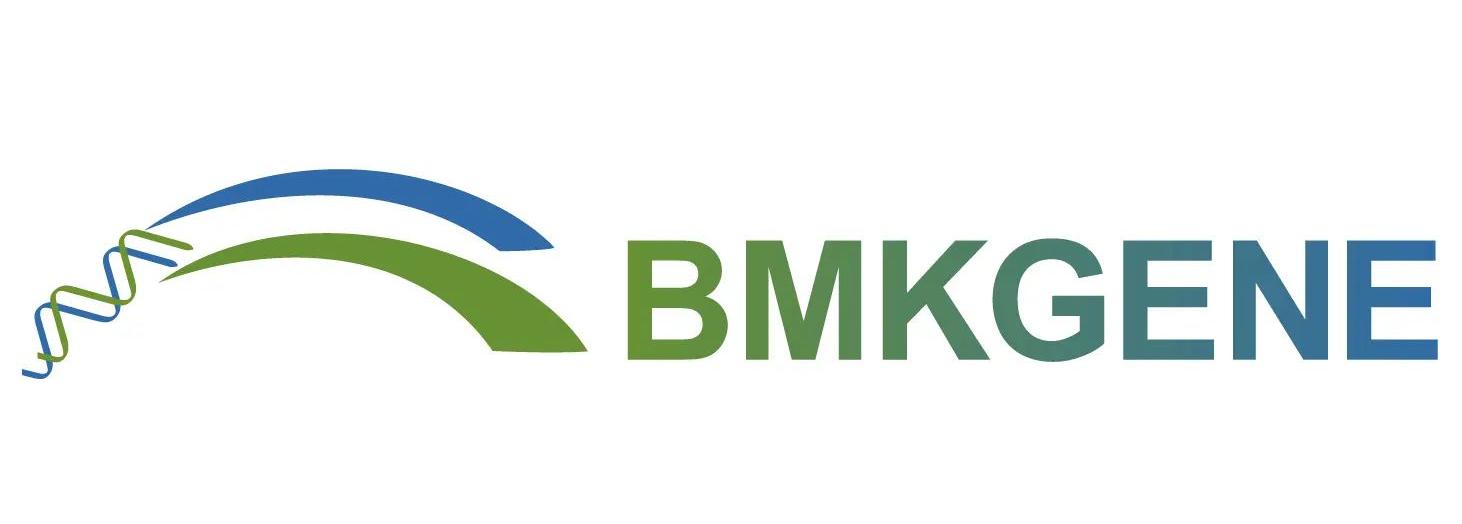TRANSCRIPTOMICS
nature
COMMUNICATIONS
Full-length transcript characterization of SF3B1 mutation in chronic lymphocytic leukemia reveals downregulation of retained introns
Full-length transcripts| Nanopore sequencing| Alternative isoform analysis
Background
Somatic mutations in splicing factor SF3B1 has been widely reported to associate with various cancers, including chronic lymphocytic leukemia(CLL), uveal melanoma, breast cancer, etc. In addition, short-read transcriptomic studies have revealed aberrant splicing patterns induced by SF3B1 mutations. However, studies on these alternative splicing patterns has long been limited to event-level and lack of knowledge on isoform-level due to the limitation of short-read assembled transcripts. Here, nanopore sequencing platform was introduced to generate full-length transcripts, which empowered inverstigation on AS isoforms.
Experimental Design
Experiments
Grouping: 1. CLL-SF3B1(WT) 2. CLL-SF3B1(K700E mutation); 3. Normal B-cells
Sequencing strategy: MinION 2D library sequencing, PromethION 1D library sequencing; short-read data from same samples
Sequencing platform: ONT MinION; ONT PromethION;
Bioinformatic Analysis

Results
A total of 257 million reads were generated from 6 CLL samples and 3 B-cells. On average of 30.5% of these reads were identified as full-length transcripts.
Full-length alternative isoform analysis of RNA(FLAIR) was developed to generate a set of high-confidence isoforms. FLAIR can be summarized as:
Nanopore reads alignment: identify general transcript structure based on reference genome;
Splice junction correction: correct sequence errors(red) with splice site from either annotated introns, introns from short-read data or both;
Collapse: summarize representative isoforms based on splice junction chains(first-pass set). Select high-confidence isofrom based on number of supporting reads(Threshold: 3).

Figure 1. FLAIR analysis to identify full-lenth isoforms associated with SF3B1 mutation in CLL
FLAIR Identified 326,699 high-confidence spliced isoforms, 90% of which are novel isoforms. Most of these unannotated isoforms were found to be novel combinations of known splice juntions(142,971), while the rest novel isoforms contained either retained intron(21,700) or novel exon(3594).
Long-read sequences empowers identification of mutant SF3B1-K700E -altered splice sites at isoform-level. 35 alternative 3’SSs and 10 alternative 5’SSs were found to be significantly differentially spliced between SF3B1-K700E and SF3B1-WT. 33 of the 35 alterations were newly discovered by long-read sequences. In Nanopore data, the distribution of distance between SF3B1-K700E-altered 3’SSs to canonical sites peaks is around -20 bp, which is significantly differed from a control distribution, similar to what has been reported in CLL short-read sequences. Isoforms of ERGIC3 gene were analyzed, where a novel isoform containing the proximal splice site were found more abundant in SF3B1-K700E . Both proximal and distal 3’SS were associated with distinced AS patterns generating multiple isoforms.


Figure 2. Alternative 3′ splicing patterns identified with nanopore sequencing data
IR event usage analysis has been long limited in short-read based analysis due to confidence in IR identification and quantification. Expression of IR isoforms in SF3B1-K700E and SF3B1-WT were quantified based on nanopore sequences, revealing a global down-regulation of IR isoforms in SF3B1-K700E .
Figure 4. Agriculture intensity and network connectivity across three farming systems (A and B); Random forest analysis(C) and Relationship between agricultural intensity and AMF colonization (D)

Figure 3. Intron rentention events are more strongly downregulated in CLL SF3B1-K700E
Technology
Nanopore Long-read Sequencing
Nanopore sequencing is a single molecule real-time electrical signal sequencing technology.
Double-stranded DNA or RNA will bind to nanoporous protein embedded in the biofilm and unwinding under the lead of motor protein.
DNA/RNA strands pass through nanopore channel protein at certain rate under the action of voltage difference.
Molecules generate different electrical signals according to chemical structure.
Real-time detection of sequences is achieved by base calling.

Performance of full-length transcriptome sequencing
√ Data Saturation

7-fold fewer reads required to reach comparable data saturation.
√ Transcript Structure Identification

Identification of diverse structural variants with consensus full-length readout of each transcript
√ Transcript-level differential analysis -Reveal changes hiden by short-reads

Reference
Tang A D , Soulette C M , Baren M J V , et al. Full-length transcript characterization of SF3B1 mutation in chronic lymphocytic leukemia reveals downregulation of retained introns[J]. Nature Communications.
Tech and Highlights aims at sharing most recent successful application of different high-throughput sequencing technologies in various reseach arena as well as brilliant ideas in experimental design and data mining .
Post time: Jan-08-2022

